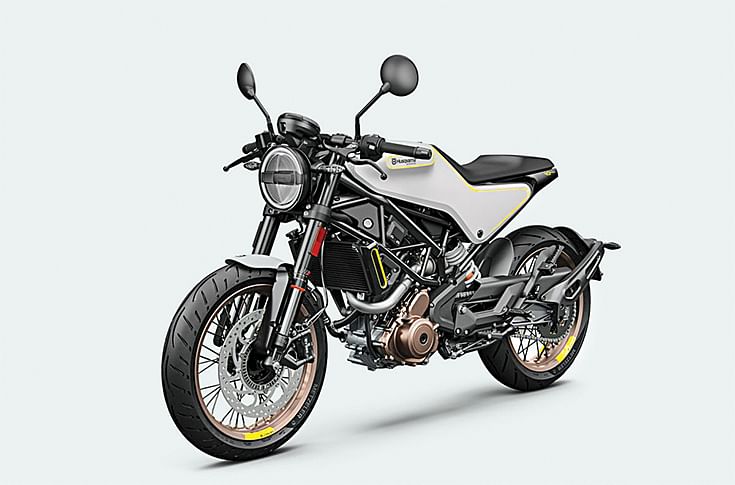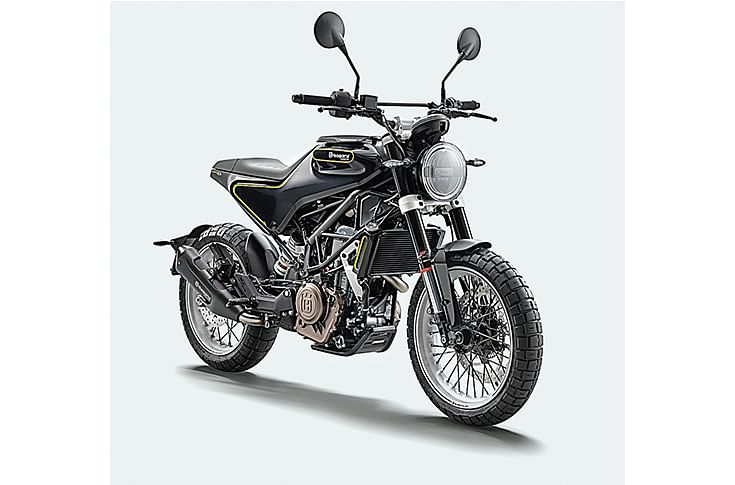Bajaj Auto plots aggressive strategy to gain market share
Rajiv Bajaj reveals aggressive growth game plan for accelerating sales across the M1 and M3 segments and a leap into EV territory.
Bajaj Auto is on a roll. Its sales numbers are up and about in the domestic market and exports are roaring too. And there’s more to come because Rajiv Bajaj, managing director, Bajaj Auto, has hinted at an aggressive go-to-market strategy designed to accelerate growth in the domestic market.
At the annual general meeting held in Pune on July 20, he announced that the company is eyeing growth of 50 percent in the domestic motorcycle market in H2 FY2019, introduction of the Swedish motorcycle brand Husqvarna (owned by KTM) in India next year (FY2020) and a rollout of electric vehicles including electric two-wheelers before the BS VI emission norms kick in from April 2020.
The company is also expected to make announcements updating on the new ongoing developments under its alliance with the UK’s Triumph Motorcycles in a few weeks from now.
According to some market analysts, the company’s good run in the domestic, as well as the export markets in Q1 FY2019, has provided decent cushion for it to offer substantial discounts on its motorcycle portfolio to boost sales (and its share) in the domestic market.
“Rajiv Bajaj’s statements at the AGM clearly suggest that the company is gearing up to further add more market share in the coming months. They want to aggressively focus on the commuter segment and are willing to grow their market share via new products and new brands, a slew of commercial strategies including new marketing campaigns and product discounts. While the company says it aims to expand the market across the M1 and M3 categories, it can also be understood that Bajaj Auto will pull more market share in the coming months on the back of its pricing strategies. This would obviously put rivals (Hero MotoCorp, Honda, TVS Motor Co) under severe price pressure as the margins on the entry-level motorcycles are very modest,” revealed a market analyst who tracks Bajaj Auto regularly and was present at the company AGM in Pune.
Rajiv Bajaj defines the future as "a complex matrix combining unyielding competitive forces, intensifying regulatory environment and escalating disruptive technologies."
Bajaj Auto plans to deploy its aggressive pricing strategy for the next two to three years, aiming to increase its market share in the entry-level or 100cc motorcycle category, where it sells its CT100, Platina and Discover variants.
While on one hand, Bajaj Auto’s new aggressive pricing strategy will have the entry-level motorcycle models undercutting their competition in the domestic market, it will also serve to make the popular Pulsar brand more accessible on the other.
Pulsar to pump up the volumes
This can be seen in the steps the company has taken recently. It has already offered discounts twice on its most affordable commuter, the CT100 in the past 12 months and has also recently rolled out the Pulsar 150 Classic, which at Rs 67,437 (ex-showroom, Mumbai) has become the second most-affordable Pulsar model after the 135LS. The Pulsar brand has a stranglehold in the 150cc, 180cc and 220cc categories and the 150cc Pulsars remain the top sellers. By rolling out the affordable Pulsar 150 model(s), Bajaj aims to draw buyers eyeing 125cc commuter bikes.
This strategy can be better understood with the following example. The prices of the top-end variants of the 125cc Honda CB Shine – SP CBS: Rs 67,477 – and the Hero Glamour – F1: Rs 66,700 – mirror the Pulsar 150 Classic. In comparison, Bajaj Auto is offering a 150cc motorcycle in the same price range.
Meanwhile, Bajaj Auto’s senior management has acknowledged that the V brand, launched in 125cc and 150cc categories, has failed to deliver as per initial expectations. They also admit that although the new Discover models (110cc and 125cc) are selling in the domestic market, there is a wide shortfall. Thus, the company is looking to drive Pulsar numbers to make up for slowing sales of these two other brands.
But will making the Pulsar brand affordable somewhat reduce its brand equity? According to Kevin D’Sa, president (finance), Bajaj Auto, the new Pulsar Twin Disc variant, which is also a 150cc model but positioned at the premium end with rear disc brake and other cosmetic upgrades, is a counter-measure to keep up the Pulsar brand equity.
“We want to expand the M1 and M3 segments. We want even the entry-level buyer to look at (owning) the Pulsar brand now. That’s why we have rolled out the Pulsar Classic at the affordable end of the brand. We are not expecting it to be a runaway success as we estimate that it will do small but critical volumes. At the other end, we have rolled out the Twin Disc, which is being received very well in the domestic market,” said D’Sa.
“Our pricing strategy is not merely buying market share. Instead, it is an attempt to apply the ‘Blue Ocean’ approach and move to the bottom. This is a holistic approach wherein we make a good product more accessible in the domestic market; this will energise the dealerships and widen the scope of the Pulsars (price bracket-wise),” he added.

Vitpilen 401 street motorcycles
The company is eyeing 45-50 percent growth YoY in the M1 segment in the next few quarters. In the M3 category, it plans to roll out new products in Q1 CY2019. The top management at Bajaj Auto is targeting total motorcycle sales of about 2.4 million units in FY2018-19 (including exports).
“The new products planned for Q4 FY2019 will attempt to ease out the margin pressures that will come via discounting the entry level products. The planned products would be feature-driven, they could even be the revamped versions of the existing models,” disclosed D’Sa.
Robust Q1 numbers
Bajaj Auto’s Q1 FY2019 results depict its return to good times. They mark its highest ever standalone volumes at 1,226,641 units (+38%), highest ever turnover of Rs 7,824 crore (+33%) and highest ever profit before tax (PBT) of Rs 1,616 crore (+25%).
In Q1 FY19, domestic motorcycle sales were 594,234 units (+39%) and bike exports 435,730 units (+25%). On the CV (three-wheeler) front, India sales were 94,431 units (+80%) and exports 102,246 units (+69%). Total sales in Q1 FY2019 have grown by 44 percent YoY in the domestic market and 31 percent YoY in the export markets.
“The company, which has sold more than a million motorcycles already (in Q1 FY2019), has given a guidance of about 4.8 million units in this fiscal (including exports),” says a market analyst.
Bajaj Auto, which is gunning for 20 percent of the domestic bike market by end-FY2019, says its share has risen to 16.3 percent in Q1 FY19 from 14 percent in Q1 FY18. The CT100 and Platina brands have sold over 190,000 units (+76% YoY) and 104,000 units (+35%) respectively in Q1 FY2019, with Bajaj reportedly seeing growth of 74 percent YoY in the entry-level segment (100cc-125cc commuter bikes) in Q1.
Its largest selling brand – Pulsar – has also grown impressively. Pulsar, along with the Avenger brand, has sold more than 223,000 units thereby recording 47 percent growth YoY. Its share in the 150-220cc segment stands at around 38 percent in Q1 FY2019.
Husqvarna coming in by FY2020
Clearing speculation around the launch of Husqvarna motorcycles in India, the company has finally confirmed that the Swedish brand will be introduced in FY2020. While it hasn't provided any details on the incoming models, it is understood the Vitpilen 401 and Svartpilen 401, both based on the KTM 390 Duke’s locally manufactured engine, will be the first models to hit local retail outlets.
Bajaj Auto, which is known to be working on the electrification of its three-wheelers, has also confirmed that it is developing electric two-wheelers. The ambit of EVs will also include quadricycles, confirms Bajaj Auto. It plans to roll out the EVs before the BS VI norms set in by April 2020.

India will see the Swedish brand Husqvarna ride in with the stylish Svartpilen
The company, which invests Rs 250-300 crore each year as capex, has earmarked Rs 300 crore for FY2019. However, according to D’Sa, the capex will see an increase in subsequent years to the tune of Rs 500 crore in FY2020.
On the export front, the company has registered its highest ever quarterly exports of about 538,000 units in Q1 FY2019. This again marks solid growth of 31 percent YoY. It says that the export growth can be attributed to growth in demand for bikes and three-wheelers across new and matured markets.
According to a company document, as of June 30, 2018, its cash surplus and cash equivalent stood at Rs 16,889 crore compared to Rs 15,542 crore on March 31, 2018. This cash arsenal clearly gives the company enough muscle to energise its future growth strategy and gain market share.
(This feature was first published in the August 1 2018 issue of Autocar Professional)
RELATED ARTICLES
Creativity Reimagined: Auto Design in the Era of Artificial Intelligence
As AI accelerates design and product cycles tighten, automotive creativity is being redefined as a race against redundan...
Magnets of Disruption: How China’s Grip on Rare Earths Is Stalling India’s EV Dreams
As China tightens its grip on rare earth exports, Indian automakers risk delayed launches, disrupted festive season prod...
HYUNDAI CRETA EV: Off to a Slow Start
Hyundai has priced the electric version of its massively popular SUV close to the Rs 20 lakh range, where it has been fo...





 06 Sep 2018
06 Sep 2018
 59452 Views
59452 Views






 Prerna Lidhoo
Prerna Lidhoo



 Autocar Professional Bureau
Autocar Professional Bureau

